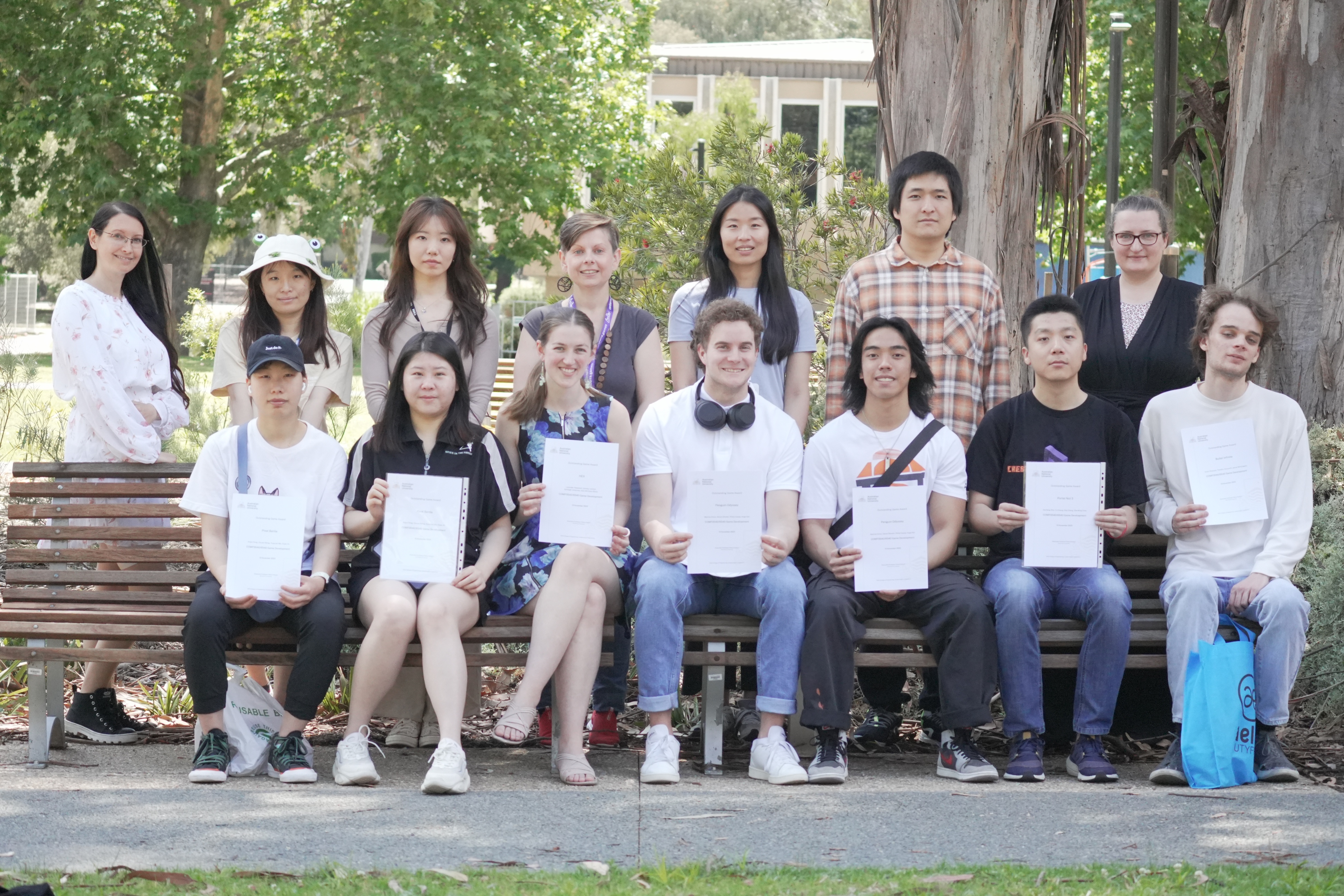The most recent cohort of over 180 students developed 44 different games ranging from wizards exploring dungeons to platform-hopping astronauts. The students were inspired by classic arcade, video and board games and ideation sessions during the course.
The Game Development Course provides a holistic grounding for game development, including elements of design, development, and production. Penny expressed, “Video games are definitely a gateway to programming and it’s a fun way to learn technical skills”.
A typical day in Penny’s classroom
“This class is a mix of game design, development, and production. Students learn about theories of game design and play, get creative with brainstorming, ideation, and prototype development (physical and digital), and work across the semester towards developing their own game.”
“I think that my favourite class was one of our early physical prototyping sessions, where I brought in craft supplies and playdough and the students made amazing prototypes of their game ideas.”
Ashley, from team Hex said, “The course was absolutely awesome, and I’d highly recommend it to anyone interested. Penny is an amazing lecturer and has so much knowledge and experience in the area.”
Penny brings her experience from 10+ years in the video games industry, working on award-winning AAA titles such as Total War and BioShock, and co-running a Canberra-based indie games company, Iron Helmet Games. Penny leads the ANU Games Research Group exploring how video games can help us understand and advance human and machine intelligence and experience. Penny also developed the GameFlow model, a widely cited model of user enjoyment of video games that inspired the development of the Gameflow lab within the ANU School of Computing.
You’re a wizard on a mission to defeat deadly monsters and ultimately seek victory! Welcome to Hex.
When asked about the idea behind the game, co-creator Ashley said, “We drew inspiration from a lot of different things, from classic games like Pixel Dungeon, Slay the Spire, and board games like Clank. We experimented, prototyped, and shaped it into the game. It is now based on feedback from playtesting.”
The Hex team consisted of Ashley Lamont, Lavender Neesham, Ashleigh Johannes, and Alex Mirrlees-Black.
“Hex (available to play here), is a procedurally generated dungeon crawler where a wizard named Riley attempts to delve deeper and deeper into a dungeon facing ever tougher enemies and challenges trying to halt their progress”. Ashley recalls getting her hands dirty from prototyping the games using paper and craft tools, an innovative technique Penny uses in her classroom.
Ashley describes her experience of designing a video game as U-shaped. Thrilling at first, with ideas flying everywhere and working with a blank canvas but soon, bringing those ideas to life seemed gruesome.
You are an astronaut. You must solve simple physics-based puzzles which can involve a variety of mechanics including gravity switches, portals, spikes, dimension portals and more.
- Mischa Orlow, team Penguin Odessey
Penguin Odessey is an adventure game, wherein you solve puzzles, jump through different dimensions and are guided by a humourous penguin. Created by Goran Sikoski, Philip Caisip, Hugo Kat, Mischa Orlow.
“Each of our team members brought something creative to the table. Whether it was a game mechanic, stylistic choices or building the story if the game,” expressed Mischa Orlow from the Penguin Odessey team. Mischa recalls Penny’s classes being very hands-on with the highlight being the flexibility in developing their projects.
Fend off enemies using bullets or a hammer and if you can survive long enough, do you dare to battle the big bad enemy boss?
Team members Timothy Horscroft, Jamie Whittington and Avani Dhaliwal are the brains behind Bullet Infinite.
Talking about working as a team, Timothy said they all worked on different aspects of the projects but shared the same vision for the game.
“I was more interested in a melee class, Avani added cool features like a skill tree and cleaned up a lot of the code. Jamie worked on a boss enemy”.
2D puzzle solving and teleportation? Yes, please!
Siqi Cheng, along with Jiacheng She, Sze Ming Chan, Yu Chang created Portal Not Three, an immersive 2D game, where players are tested on their intelligence, timing and perspective.
“The essence of our game is a tribute to the inventive portal mechanics popularised by Valve’s Portal series. Our goal was to reimagine the experience from immersive 3D to a crisp 2D platformer.” Siqi Cheng.
“The most rewarding moments occur after completing a game development project, starting from the initial concept to the numerous iterations and improvements along the way. Every change and implemented feature brings excitement,” she says.
The group employed an agile methodology to develop their games, sharing results and new developments within the team, ensuring collaboration and progress. It also helped that the group shared similar interests, with communication being the key to their success.
Once upon a time, a pink rabbit set off on an adventure to explore the world.
“Our game ‘Pixel Adventure Battle’ features a world with a variety mazes, snowscapes, jungles, and dungeons. Along the way, players must battle monsters ultimately defeating the world’s boss to claim the trophy and complete the adventure,” Xueyuan Ma, team Pixel Battle. The team also consists of Zixuan Wang, Anjun Feng and Ziyao Jin.
Initially, we aimed to create a level-based adventure game similar to Mario. However, realising the abundance of similar games and potential player fatigue, we shifted from strict level design to constructing an open world”, Xueyuan Ma says.
Talking about the course, he says, “I thoroughly enjoy the game development course’s workshops. These sessions allow us to discuss innovative gameplay ideas with fellow gaming enthusiasts and draw inspiration from others’ creations. I’m very fond of this course and would eagerly participate in more game-related courses at ANU.”

Game Development is offered as a third-year undergraduate and master’s course and is available to students studying computing.
Learn more about the Game Development course here.

